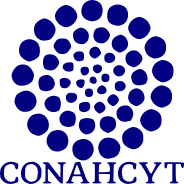Descriptive study on the use of anti-inflammatory plants for menstrual disorders in Peruvian women
DOI:
https://doi.org/10.18387/polibotanica.59.22Keywords:
Mujer, uso tradicional, trastornos menstruales,, plantas antiinflamatoriasAbstract
In Peru there are more than twenty thousand species with medicinal qualities that include anti-inflammatory, antimicrobial and antioxidant activities. These plants can be easily acquired due to their low cost and their positive effects for the treatment of some physical ailments. The objective of this study was to describe the use of anti-inflammatory plants for menstrual disorders in Peruvian women from the coastal, mountain and jungle regions. The data was collected from a survey administered to 100 people with voluntary participation, measuring variables such as demographic characteristics, type of plant used, purchase and reported use at a personal and family level. It was recorded that the family income of the majority of the women was below the minimum wage, and that those from the coastal and mountain regions are the ones who most use anti-inflammatory plants to relieve menstruation disorders. Furthermore, there was a low positive correlation (Rho: 0.213, p<0.05) between the degree of training and the purchase of anti-inflammatory plants for use in said gynecological event. In conclusion, the most used anti-inflammatory plants are chamomile and oregano.
References
- Ascanio, E.; Chavez, G., & Ortiz, L. (2023). View of Traditional use and qualitative chemical composition of medicinal plants in the communities of Sardinata and Cúcuta in Norte de Santander - Colombia. https://revistas.uptc.edu.co/index.php/ciencias_horticolas/article/view/15527/12836
- Bedoya, M., Cisneros, C., Lazaro, B., Mendoza, K., & Cisneros, E. (2022). Foeniculum Vulgare (Hinojo): Alternativa terapéutica femenina. Revista Científica Ciencia Médica, 25(1), 49-57. https://doi.org/10.51581/rccm.v25i1.468
- Cachay, M., & Vásquez, M. (2023). Contexto sociofamiliar que favorece la inteligencia emocional en adolescentes: una revisión. Revista de Investigación en Psicología, 26(1), 171-186. https://dx.doi.org/10.15381/rinvp.v26i1.24429
- Chamba, M., Mora, G., Paccha Tamay, C., & Reyes Rueda, E. (2019). Conocimientos, actitudes y prácticas de la medicina ancestral en la población de Casacay ecuador. Zhoecoen, 11(4), 88–94. https://doi.org/10.26495/tzh.v11i4.1237
- Choque, M., Nadid, N.; Seña, D., Medinacelli, O.,Fernández, R., Cárdenas, L.; Sanchez, P.; Guzmán, T., & Dafne, M. (2019). Traditional knowledge of the medicines of medicinal plants of the city of Sucre-Bolivia. Bio Scientia, 2(4), 102–115. https://revistas.usfx.bo/index.php/bs/article/view/289
- Crisostomo, C., & Quispe, L. (2023). Estudio etnofarmacológico de las plantas medicinales con mayor uso para tratar enfermedades digestivas en los pobladores de la comunidad de Chiara, distrito de Combapata, Canchis, Cusco, octubre 2023. https://repositorio.uma.edu.pe/handle/20.500.12970/2028
- Cuyás-Hernández, M. (2016). Plantas medicinales en España. uso, propiedades y precauciones en la actualidad. http://147.96.70.122/Web/TFG/TFG/Memoria/MARIA%20CUYAS%20HERNANDEZ.pdf
- Días, M. & Asenjo, J. (2023). Andean women: Attitudes towards the use of plants for the treatment of gynecological events. Revista Cuidarte, 14(2). https://doi.org/10.15649/cuidarte.2724
- Fuentes, J., Herrero-Martín, G., Montes-Martínez, M., & Jáuregui-Lobera, I. (2020). Alimentación familiar: influencia en el desarrollo y mantenimiento de los trastornos de la conducta alimentaria. Journal of Negative and No Positive Results, 5(10), 1221-1244.https://dx.doi.org/10.19230/jonnpr.3955
- Gallegos, M. (2016). Las plantas medicinales: principal alternativa para el cuidado de la salud, en la población rural de Babahoyo, Ecuador. Anales de la Facultad de medicina, 77(4):327-32. https://revistasinvestigacion.unmsm.edu.pe/index.php/anales/article/view/12647
https://doi.org/10.1155/2021/6002949
- Kachmar, M., Naceiri, H., Bellahmar, M., Ouahbi, A., Haloui, Z., & El Badaoui, K. Traditional Knowledge of Medicinal Plants Used in the Northeastern Part of Morocco. Evid Based. Complement AlternatMed. 2021:6002949.
- Luengo, T. (2003). Plantas medicinales antiinflamatorias utilizadas en el tratamiento del reumatismo. Offarm, 22(6), 118–122.
- Philippe, J. (2005). Lista de plantas medicinales comunes en la subregión andina. propuestas para su integración en los sistemas de salud. https://bvs.minsa.gob.pe/local/MINSA/3544.pdf
- Sánchez-Prieto, M., Losa-Puig, H., Domínguez-Osorio, N., Sanjosé-Alemany, M., Losa-Domínguez, F., & Sánchez-Borrego, R. (2023). El alivio natural: Sauzgatillo (Vitex agnus-castus) para el síndrome premenstrual y la dismenorrea. Revista chilena de obstetricia y ginecología, 88(2), 121-125. https://dx.doi.org/10.24875/rechog.22000116
- Serret, J., Hernández, A., Mendoza, O., Cárdenas, R., & Villasis, M. (2012). Alteraciones menstruales en adolescentes. Boletín médico del Hospital Infantil de México, 69(1), 63-76.
- Silva-Alarcón, J., Cabrera, J., Trujillo, O. & Reyes-Mandujano, I. (2019). Características de las plantas medicinales comercializadas en diferentes mercados de Lima Metropolitana y sus efectos sobre el medio ambiente y la salud pública. Horizonte Médico (Lima), 19(4), 63-69. https://dx.doi.org/10.24265/horizmed.2019.v19n4.09
- Theuser, A., Hack, C., Fasching, P., Antoniadis, S., Grasruck, K., & Wasner, S. Patterns and Trends of Herbal Medicine Use among Patients with Gynecologic Cancer. Geburtshilfe Frauenheilkd. 2021;81(6):699-707. https://doi.org/10.1055/a-1487-6284
- Vega, N., Jiménez, S., & Merconchini, M. (2016). Trastornos menstruales en la adolescente posmenárquica: Un reto terapéutico en la atención primaria de salud. Medicentro Electrónica, 20(1), 56-59.
- Walter, D. A contribution to ethnobotany in the Cordillera Blanca (Sierra de Ancash). (2017). Ibero-Amerikanisches Institut Preußischer Kulturbesitz, 34(1), 149-176.

Downloads
Published
License

Polibotánica by Departamento de Botánica de la Escuela Nacional de Ciencias Biológicas del Instituto Politécnico Nacional se distribuye bajo una Licencia Creative Commons Atribución-NoComercial-CompartirIgual 4.0 Internacional.



















